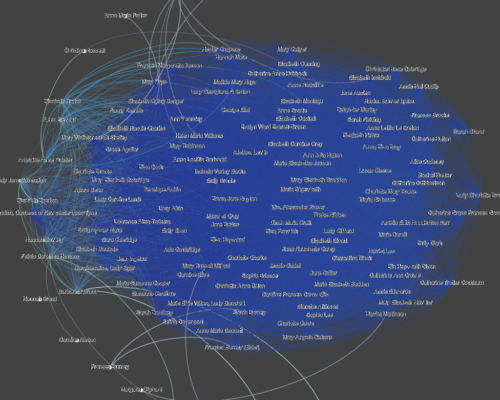From Harold Bloom’s The Anxiety of Influence[1]: Weaker talents idealize; figures of capable imagination appropriate for themselves. But nothing is got for nothing, and self-appropriation involves the immense anxieties of indebtedness, for what strong maker desires the realization that [she] has failed to create [herself]? From Shared Experience’s Mary Shelley: She goes to stand before the portrait, and stares…
Tag: Gephi
Basic Gephi Tutorial
Gephi Tutorial from DHSkillshare on Vimeo.
This is a basic Gephi tutorial (apologies for the coughing not being totally edited out yet, having trouble getting the export settings right in my editor for a screen cap video). Here are some notes about data prep for Gephi:
Gephi Tutorial from DHSkillshare on Vimeo.
There are two tables: edge and node. Nodes are each of the points on the network map and the edges are the links between them. You can import one or the other first depending on what data you have, and while you can use the data lab in the same way as a spreadsheet manipulation program I would recommend getting your data in order before importing it to Gephi, because the program can crash often and takes lots of processing power to run so it can be slow.
The nodes table should have all the data about your points that you might want to use in Gephi. Most important is a value called, ID. ID is what the node is to Gephi, i.e. identifies, the nodes as distinct. You can set one of the columns in your spreadsheet as ID when importing the data, but it’s easier to pick a column ahead of time and let Gephi discover it on its own. ID is also important because it must correspond to the values in the edge table in order to create the correct edges. ID can be a number; it can be a name; it can be a place; it can be anything so long the values are repeated across the tables.
The edges table has two columns: source and target. Like an arrow, source is where the edge is coming from and target is where it goes. Both of these columns must be named and the values must correspond to the ID values. If you import the edge table first it will create a nodes table using the values in the two columns and you can click the “create missing nodes” box to tell it do so.
